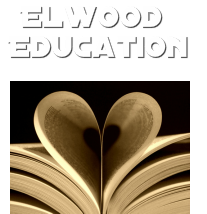PUNCTUATION WITH QUOTATION MARKS
1.
Commas and periods go inside quotation marks.
2. Semicolons and colons go outside quotation marks.
3. Question marks and exclamation points depend on context.
The exception to #1 is when there is a parenthetical reference to a source. Then the period goes after the parenthesis.
"There's an ongoing discussion about free speech and how it can be regulated online" (4).
However, when a quotation takes up more than four lines of print, the passage is set aside with a double indent. The passage set up is usually followed by a colon. The lengthy quote is still doubled spaced and the page number(s) follow outside of the final period. There should be some discussion by the essayist following the quote. Typically, a double indented quote is not going to start or end a paragraph. Most often, neither is a short quote.
For an example of this, click here.
Examples to Clarify #3:
Where you place the exclamation point depends upon whether the dialogue or the entire sentence is being shouted.
I hate that he whispered so nonchalantly, "But I don't love her"!
She desperately shouted, "Please don't go!"
Where you place the question mark depends upon whether the dialogue or the entire sentence is asking a question.
Did he say, "Please don't go"?
She asked, "Why not go now?"
2. Semicolons and colons go outside quotation marks.
3. Question marks and exclamation points depend on context.
The exception to #1 is when there is a parenthetical reference to a source. Then the period goes after the parenthesis.
"There's an ongoing discussion about free speech and how it can be regulated online" (4).
However, when a quotation takes up more than four lines of print, the passage is set aside with a double indent. The passage set up is usually followed by a colon. The lengthy quote is still doubled spaced and the page number(s) follow outside of the final period. There should be some discussion by the essayist following the quote. Typically, a double indented quote is not going to start or end a paragraph. Most often, neither is a short quote.
For an example of this, click here.
Examples to Clarify #3:
Where you place the exclamation point depends upon whether the dialogue or the entire sentence is being shouted.
I hate that he whispered so nonchalantly, "But I don't love her"!
She desperately shouted, "Please don't go!"
Where you place the question mark depends upon whether the dialogue or the entire sentence is asking a question.
Did he say, "Please don't go"?
She asked, "Why not go now?"
MORE SAMPLES OF QUOTATION MARKS IN SENTENCE WITH REGARD TO PUNCTUATION AND QUOTES. FOR MORE INFORMATION, VISIT "QUOTES IN AN ESSAY."
Punctuation Marks with Quotes -- REVISED JANUARY 10, 2015
In example 1, you use a comma because “and” connect two independent clauses. The page number goes at the end because content from the novel or source follows the quote, not the opinions of the essayist.
1. “The day began as any other,” and then the character walks naively into chaos (17).
In example 2, you use a semicolon because there is no coordinating conjunction between the two independent clauses.
2. “The day began as any other”; nevertheless, the character walks naively into chaos (17).
In example 3, you put the page number after the quote because the sentence ended with that period.
3. “The day began as any other” (17). Nevertheless, the character walks naively into chaos.
In example 4, you put the page number after the quote because the essayist’s ideas follow the quote, not those belonging to the novel or source.
4. “The day began as any other” (17); nevertheless, the subsequent and immediate chaos with the character must endure demonstrates the author’s excellent juxtaposition of peaceful moments with crushingly horrible events.
In example 1, you use a comma because “and” connect two independent clauses. The page number goes at the end because content from the novel or source follows the quote, not the opinions of the essayist.
1. “The day began as any other,” and then the character walks naively into chaos (17).
In example 2, you use a semicolon because there is no coordinating conjunction between the two independent clauses.
2. “The day began as any other”; nevertheless, the character walks naively into chaos (17).
In example 3, you put the page number after the quote because the sentence ended with that period.
3. “The day began as any other” (17). Nevertheless, the character walks naively into chaos.
In example 4, you put the page number after the quote because the essayist’s ideas follow the quote, not those belonging to the novel or source.
4. “The day began as any other” (17); nevertheless, the subsequent and immediate chaos with the character must endure demonstrates the author’s excellent juxtaposition of peaceful moments with crushingly horrible events.
